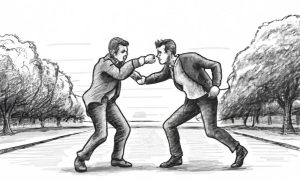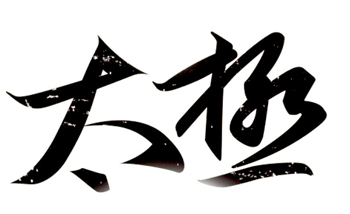Mental Aspect “When two people engage in combat, each harbors a desire to win. They quickly engage and strike with bravery, similar to an eagle swooping into a chicken yard. The fists must display imposing might from all directions, feet must tread the central earth, looking down on the opponent as if no one else exists. Dominate with spirit, conquer with skill, respond to the enemy with action, exhale with noise, disrupt the enemy’s intentions, and bolster our own momentum. Head must butt, hands must strike, body must press, steps must surpass, feet must kick, spirit must intimidate, and breath must assault. Actions must be spirited, every move precise. Practice with emotion, use with inherent form. Aim for ‘internal spirit, external ease.’ Calm the mind, consolidate the breath, gather the spirit. A calm mind keeps the breath from rising, maintaining a good state of relaxed and sinking form. Consolidating breath prevents spirit from leaking, creating a profound momentum. When exerting force, this increases strength. Inhaling raises the spirit, potentially throwing the opponent off; exhaling relaxes and stabilizes, allowing you to release the opponent. Gathering spirit ensures that the force penetrates the bones and reaches the skin, moving so that the whole body vibrates, and momentum soars, with movements as agile as a dragon or tiger, yet without a fixed posture, resembling ‘a cat hunting mice, an eagle catching rabbits.’ Therefore, one must concentrate fully in the moment, not let thoughts wander, integrate internal and external, alternate between motion and stillness, displaying a powerful, stable, and flexible physical capability.
Physical Aspect
Through prior standing and moving exercises, the physical qualities should meet the following comprehensive requirements: Head and Neck Position
The head should be lifted lightly and the neck relaxed and straight. The head is the principal part of the body, where cognitive thinking occurs. The head should lead with a slight elevation, as if ‘suspended by a thread from above,’ ensuring not to lean forward, backward, or sideways, affecting the efficacy of combat movements. Only by slightly lifting can one avoid lagging behind. ‘Light and lifted’ means guiding upwards without stiffening, maintaining the head’s flexibility and leadership. This is complemented by clenching the teeth and touching the tongue to the roof of the mouth, aiding in the head’s lightness and the neck’s straightness. Eyes should watch the opponent entirely, observing their intentions, recognizing their direction, and discerning their strategy. A calm and composed demeanor also aids in ‘feeling’ and ‘understanding’ the force. Ears should listen quietly, enhancing total concentration.
Trunk Position

The general requirements for the trunk include containing the chest, wrapping the abdomen, lifting the back, sinking the waist, and rounding the crotch. The chest should be relaxed and slightly hollowed inward, feeling empty. Not protruding the chest allows the breath to sink rather than rise, achieving a wrapped abdomen and thus lowering the center of gravity, enhancing stability. Meanwhile, the back should be straight and uplifted, muscles expanded horizontally, creating a stretch that facilitates power transmission. Containing the chest and lifting the back are interdependent; only by properly containing the chest can the back be effectively lifted, pulling the energy along the back. Sinking the waist, or relaxing it, ensures harmony and coordination in redirecting the opponent’s force. Rounding the crotch without tensing allows for agile movement and transition of the lower limbs.
Upper Limb Position
Overall, the upper limbs should achieve relaxed shoulders and extended elbows, with protruding palms and sunk wrists. In combat, the upper limbs are the forefront, making their physical guidance crucial. The shoulder, as the root of the upper limb and pivot to the torso, must be relaxed and aligned, facilitating the transmission of force. Elevated shoulders tighten the back, hindering adaptability. Relaxed shoulders allow for a vacant space between the shoulder and ribs, giving the arms more freedom to move, enhancing ‘sticking and following’ and ‘leading into emptiness.’ The elbow, as the middle section of the upper limb, should be flexible, appropriate for extension. Thus, the elbow needs to be expanded, not just simply ‘dropped.’ Dropping the elbow is for when one is ready to release energy upon finding an opportunity; merely dropping it can lead to being suppressed by the opponent, unable to strike and thus passively receiving blows. Expanding…

